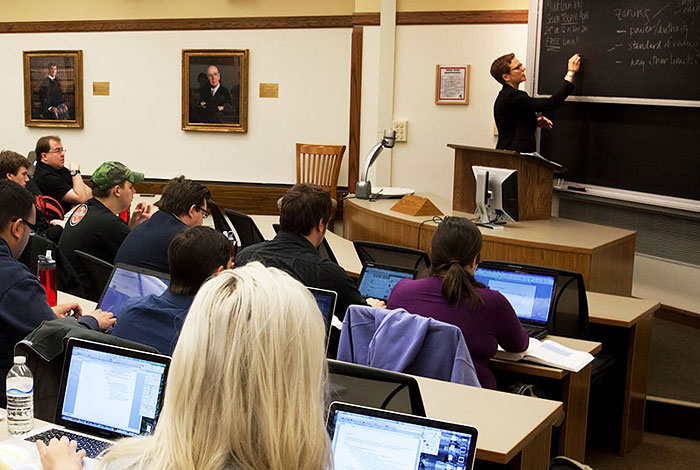
6 TRENDS THAT WILL CHANGE OUR IDEA OF THE EDUCATION SYSTEM
According to the report issued by the New Media Consortium and the Association of Information Technology Professionals, within the next five years the education system will be determined by the following trends:
Changes in the culture of innovation
The world is changing, and education must change along with it. Educational institutions adopt ideas from the world of business, referring to successful start-up experiences, and launch new processes. Paper routine is gradually leaving schools, ceding its place to electronic data processing. Higher education institutions have realized that technologies can become a catalyst of educational process improvement. Yet, the culture of innovation means not only acceptance of new technologies and revision of teaching methods, it also signifies awareness of the fact that values in the external world constantly change. This means education must change as well in order to meet student expectations.
Expansion of cooperation between organizations
The number of contacts and connections between various organizations in education is growing, and technologies influence this trend in two ways. First of all, it becomes impossible not to use technologies, while the use of them is often too expensive. Therefore educational institutions open a dialogue with each other and with educational technology makers, so as to agree on advantageous terms and conditions and to influence final products. Secondly, schools and universities are beginning to share data and content more actively. Lesson notes, methodical guidelines, and class records are uploaded to the network. This is beneficial for everyone: both instructors and students. Various school blogging platforms are developed, uniting educational institutions in social media and allowing rapid exchanges of professional experiences.
Changes in the role of student assessment
Technologies make it possible to work with large data sets, e.g. to record statistics of student results and conclude which teaching methods are better. It is possible to maintain a detailed database on each student from his/her entrance to a secondary school until his/her graduation from a university in order the adjust his/her individual learning plan and draw conclusions on the education system on the whole. This shifts focus from final assessment to intermediate results that prove to be much more important for development of an education strategy. Given that the said data are accessible not only to teachers, but to students as well, students gain more independence and control of their opportunities.
Spread of open educational resources
Many teachers are sincerely happy to share their knowledge with the entire world, not thinking of any personal benefit. Otherwise it would be difficult to explain such a rapid dissemination of free educational materials on the Internet: courses, workbooks, learning content, research articles, and many more.
Spread of blended learning
Owing to the information technology, a flipped classroom model has started spreading, and various forms of blended learning have emerged. Blended learning combines the best of both worlds: an opportunity to distribute time and effort freely and to acquire knowledge limitlessly beyond the classroom, as well as advantages of working with the teacher face to face. The modern trend is that more and more educational institutions count on an effective combination of technologies and traditional personal tutorship.
Rearrangement of learning spaces
Educational institutions have started changing spaces so that students can work with electronic devices and interact more with each other. One of such rearrangement options is to place a teacher in the classroom centre with student workplaces located around the teacher, with information that would have previously been shown on a blackboard displayed on everyone’s personal screens. Libraries and other spaces in educational institutions are creating individual learning places where it is convenient to work on one’s portable devices.




